TWO FREE PRUNING TOOLS!
Tool Number One
Right now, I have before me a most useful pruning tool, two different kinds of pruning tools, in fact. And they are always with me, even when I sleep. Let’s start with the first: my hands.
I use my hands to rip unwanted stems from plants. This seemingly brutal method of pruning can sometimes do a better job and leave the plant healthier than can a precision cut with pruning shears, even fancy pruning shears. Hand pruning is the best way to get rid of suckers, those overly exuberant, usually vertical stems.
On apple trees, watersprouts poking up along branches are not fruitful, at least not for a few years. Those watersprouts also shade the rest of the tree and rob other growing branches of nutrients. 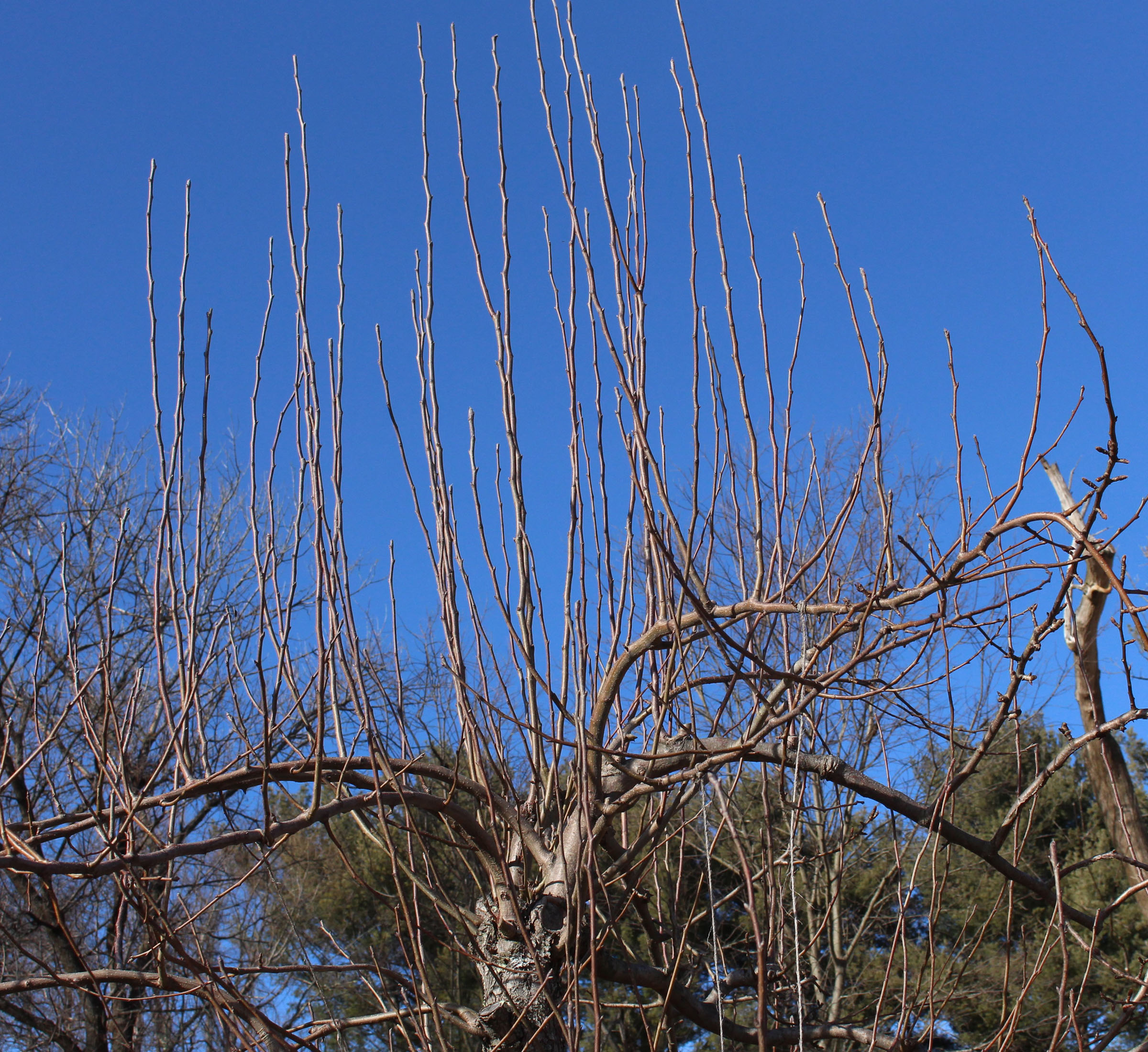 With tomato vines trained to grow up stakes or inside cages, excess suckers (another word for vigorous, vertical shoot) cause congestion that makes it harder to find the plump, juicy fruits.
With tomato vines trained to grow up stakes or inside cages, excess suckers (another word for vigorous, vertical shoot) cause congestion that makes it harder to find the plump, juicy fruits.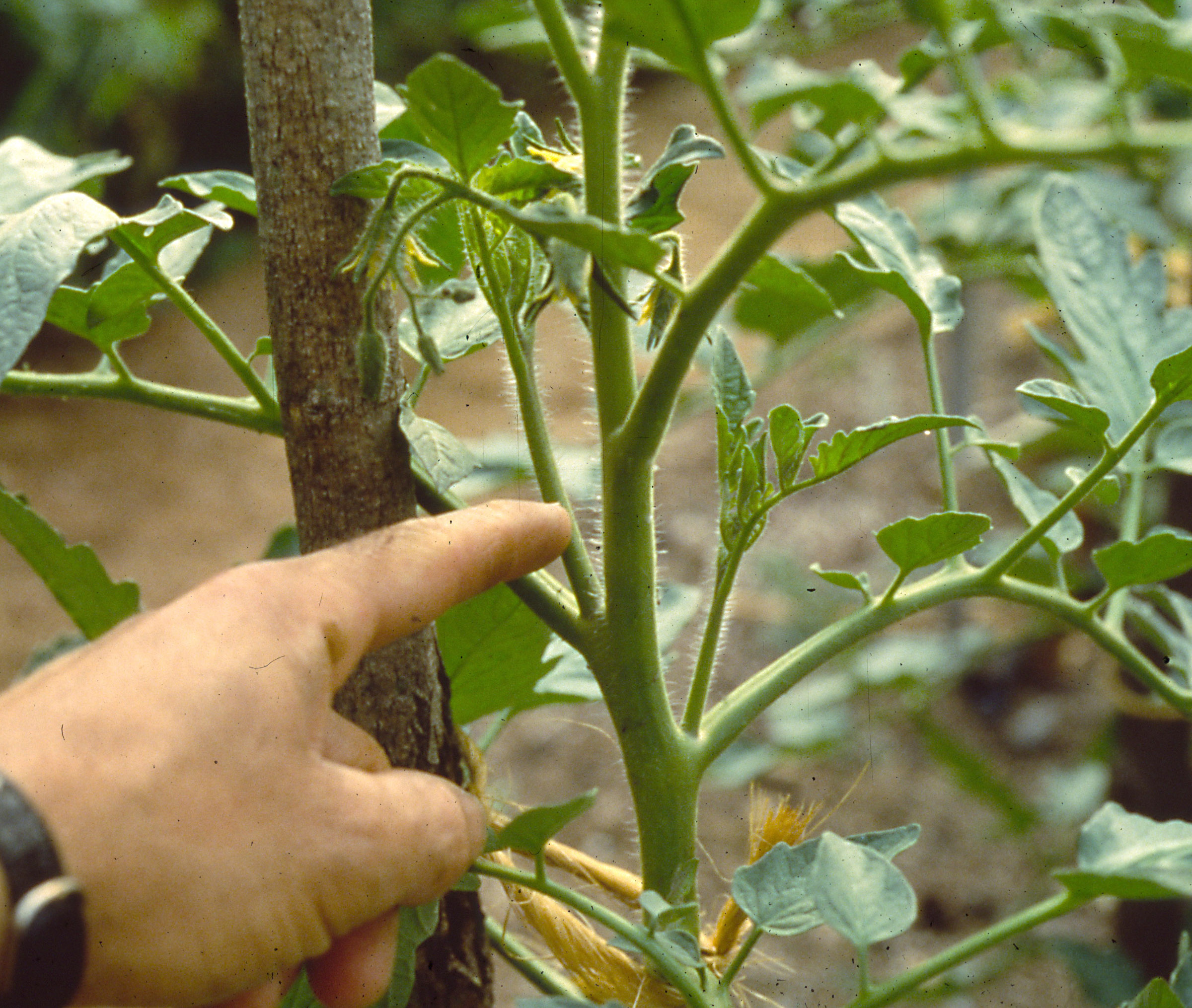 In either case, diseases can fester in the shade resulting from their growth.
In either case, diseases can fester in the shade resulting from their growth.
In contrast to pruning shears, which can infect a healthy plant with diseased sap picked up from a sick plant, my hand is unlikely to transmit disease from one plant to the next. For instance tobacco mosaic virus can be transmitted from an infected plant to healthy plants this way.
When suckers on fruit trees are cut back with pruning shears, the trees usually rebel with one to four vigorous, new suckers poking up right where you cut. Such regrowth is rare when I grab a sucker in my hand, then give it a quick downward jerk, because then buds hidden at the base of a shoot come off also. Hand pruning is most effective when suckers are still young and succulent.
Two in One Tool, In Fact
The other pruning tool I always have with me is attached to my hand: it’s it’s my thumbnail. This tool has a different use than my whole hand.
My thumbnail is the ideal tool for pinching out just the tips of shoots. Why would I want to do that? For one thing, to promote bushiness. Of a zinnia plant, for example. Or cushion ‘mums. Or the potted avocado I once grew, to make it’s single, gawky stalk branch out. Or rhododendron bushes.
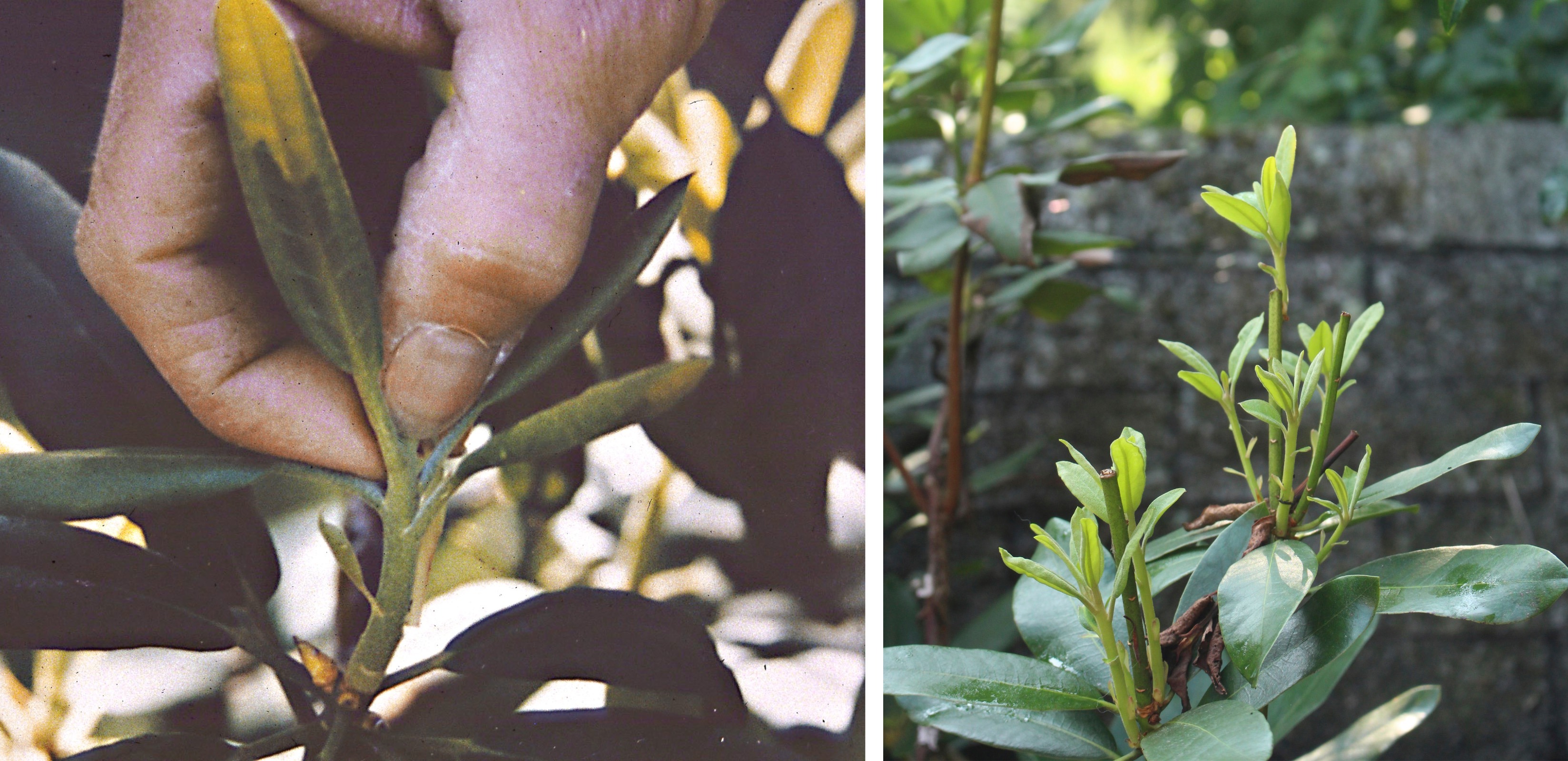
Branching from new rhododendron shoot pinched back
In late spring, I use this same tool to pinch out spent rhododendron flowers so the plant can channel its energy into growth.
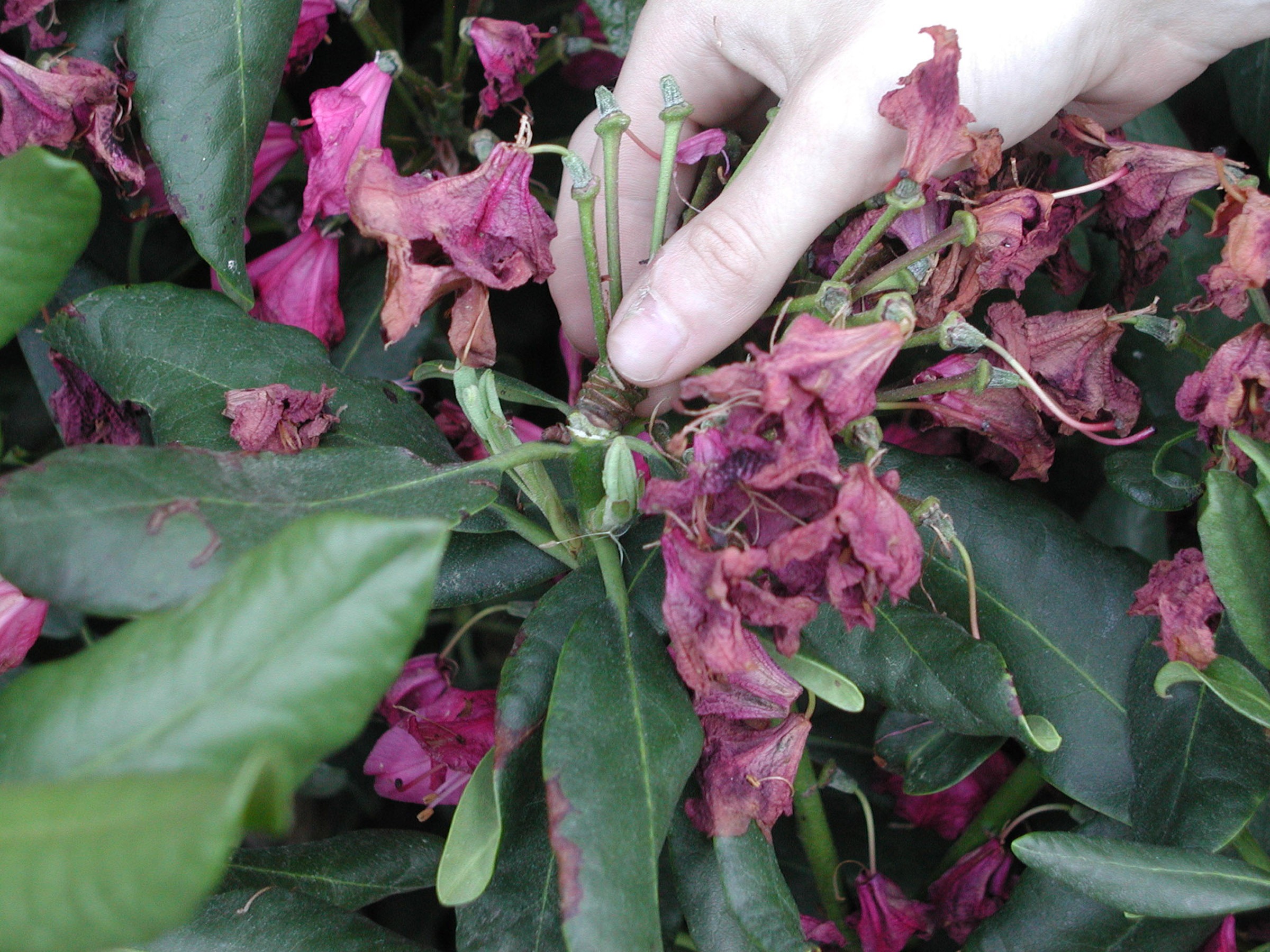
Pinching spent flowers from rhododendron
The same effect results from pinching out young shoots. (These and other pruning techniques are detailed in my book THE PRUNING BOOK, available, signed, from my website, and elsewhere).
Pinching out the tip of a shoot with your thumbnail is also useful for temporarily checking its growth. I’ve done this when more than one stem tries to become the main trunk of a young tree. Too many “top dogs” leads to narrow crotch angles which are apt to eventually split apart. Pinching out the tips — repeatedly, if necessary — of all but the best shoot makes sure it can jump and stay ahead of the pack.
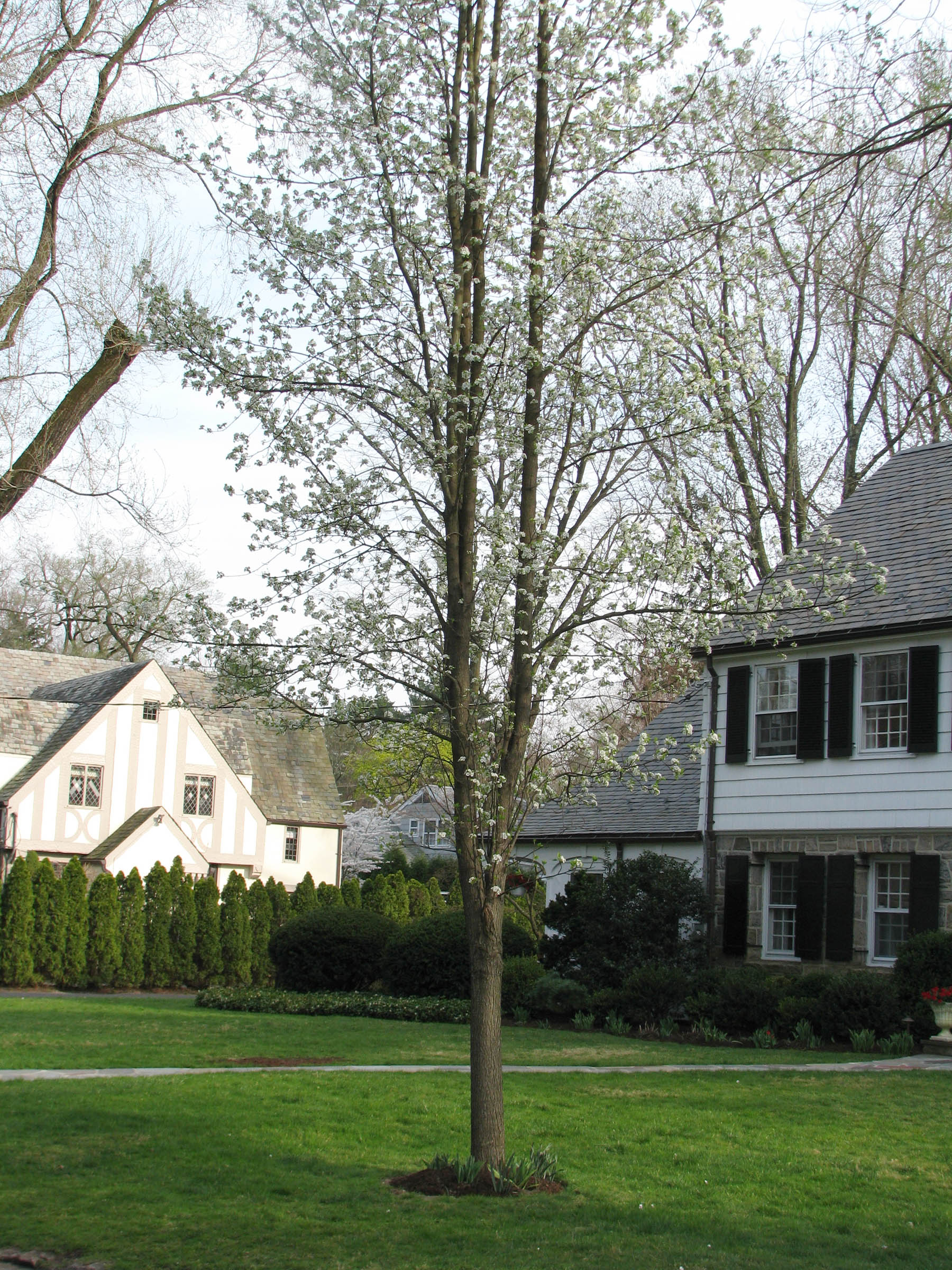
Bad: two leading shoots could break in the middle; one should have been pinched or cut off in its youth.
The advantage of pinching the tips of such shoots rather than just lopping off whole shoots is that pinching is less debilitating to the young tree, which, after all, you want to grow as much as possible when the tree is young and filling its allotted space.
I also use my thumbnail to pump more energy into flowers and fruits. “Dinnerplate” dahlias come from pinching off blossom buds forming along the stems, leaving just the flower on the top of the stem. (Also start with a naturally, large-flowered variety.)
And large, luscious peaches and apples are what result when you pinch off enough fruitlets to put a few inches of space along the stems between those that remain.
Hands On with Figs Also
I’ve also been playing around with pinching the tips of shoots of my fig trees to increase production and advance fruit formation and ripening. 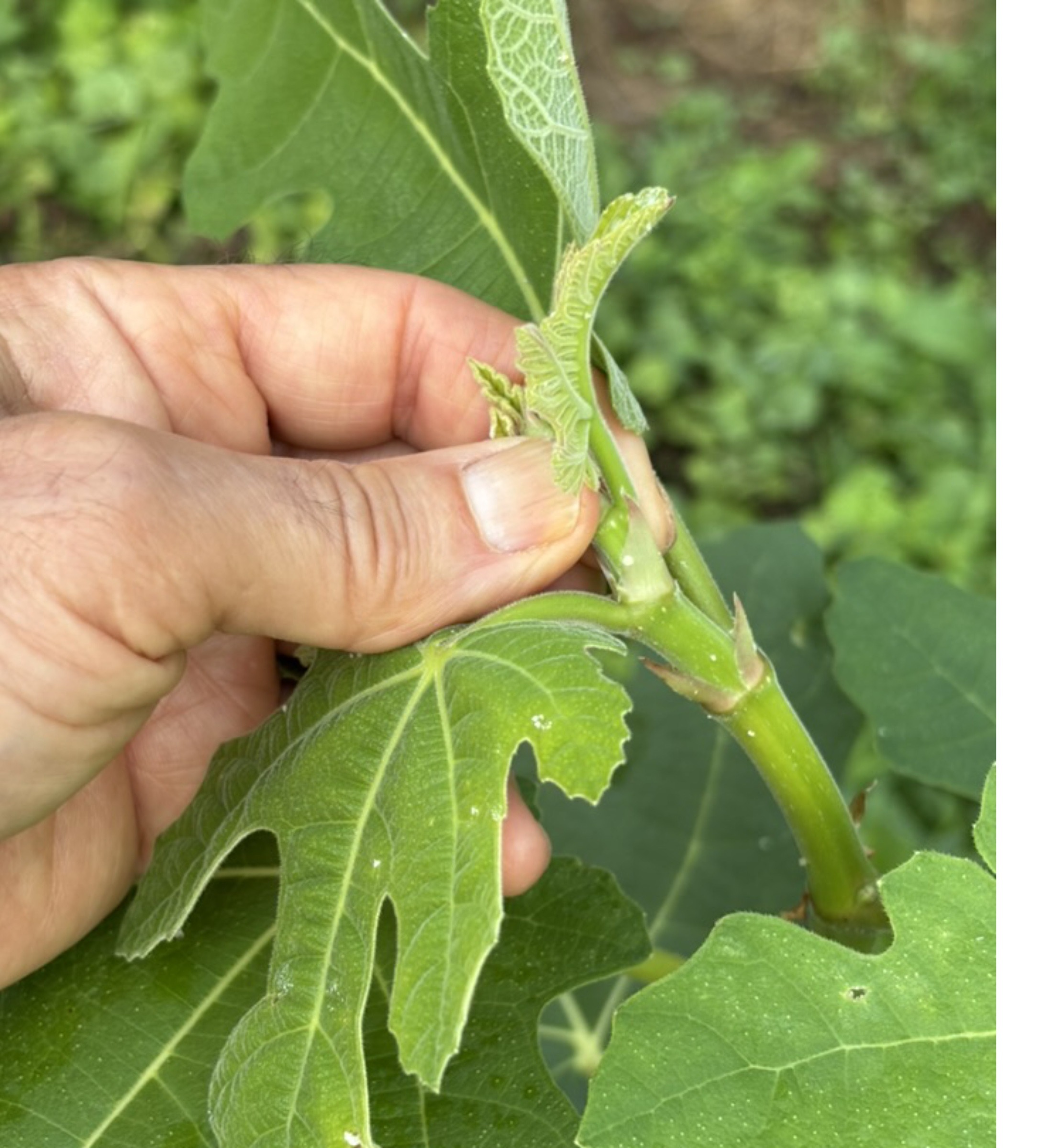 As I wrote in my book GROWING FIGS IN COLD CLIMATES, available, signed, from my website, and elsewhere), “One recommendation is to pinch (remove just the growing point of) a barren stem when it has made 5 to 8 leaves. Another recommendation is to pinch shoots having 2 buds in the juncture where a leaf meets the stem.”
As I wrote in my book GROWING FIGS IN COLD CLIMATES, available, signed, from my website, and elsewhere), “One recommendation is to pinch (remove just the growing point of) a barren stem when it has made 5 to 8 leaves. Another recommendation is to pinch shoots having 2 buds in the juncture where a leaf meets the stem.”
Synthesizing these and other recommendations (along with some knowledge about plant growth and fruiting) for my figs, I watch for buds in the leaf axils along a stem, especially rounded buds. Then, when the shoot has a few leaves, I pinch out the tip.
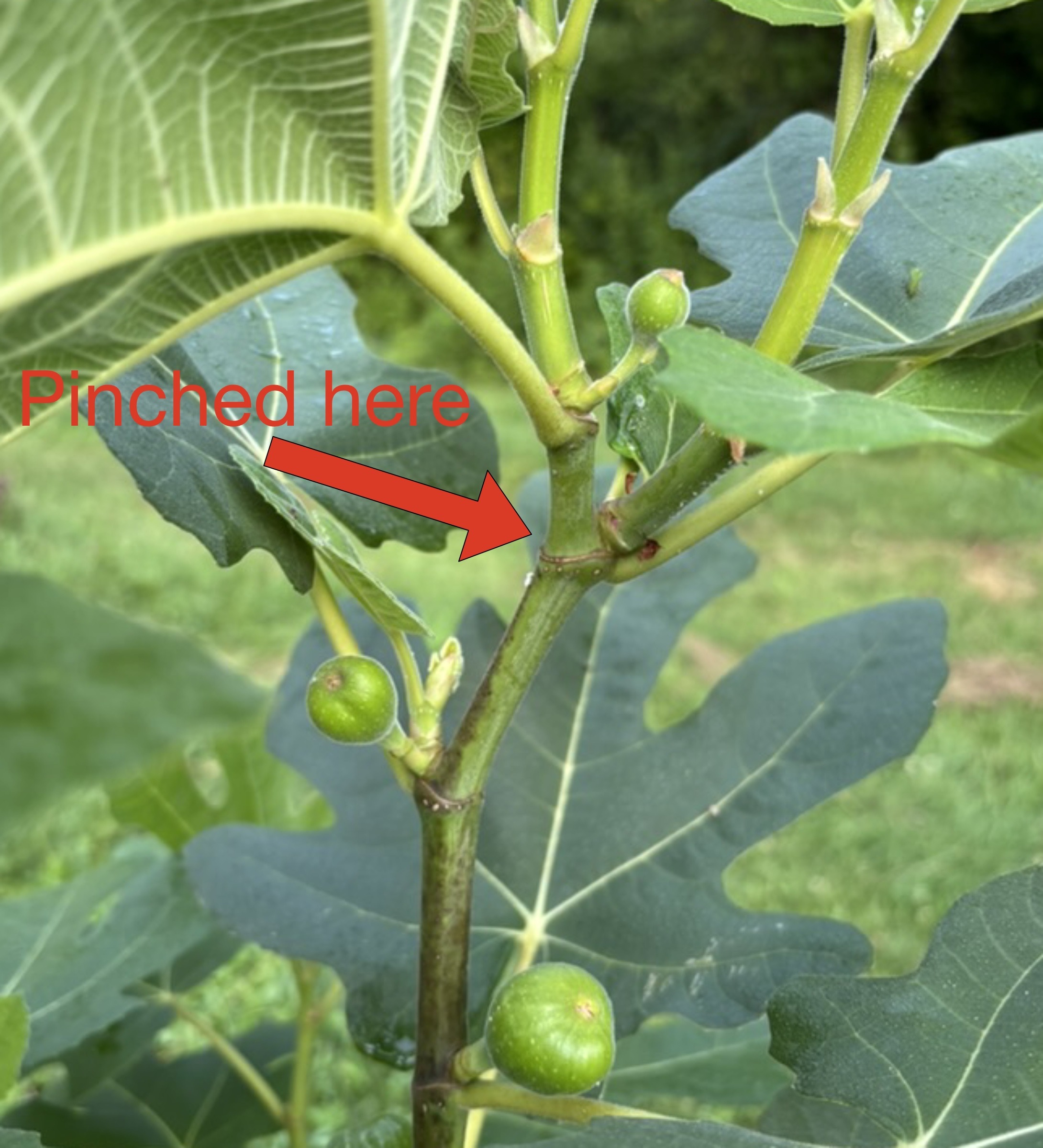
Effect of pinching fig shoot
I’ll report back after a few more years of experimentation.
Especially this time of year, while fruits are developing and some stems are still succulent, my hands offer two convenient and low maintenance pruning tools. Consider using these carry-everywhere tools now and in other seasons!


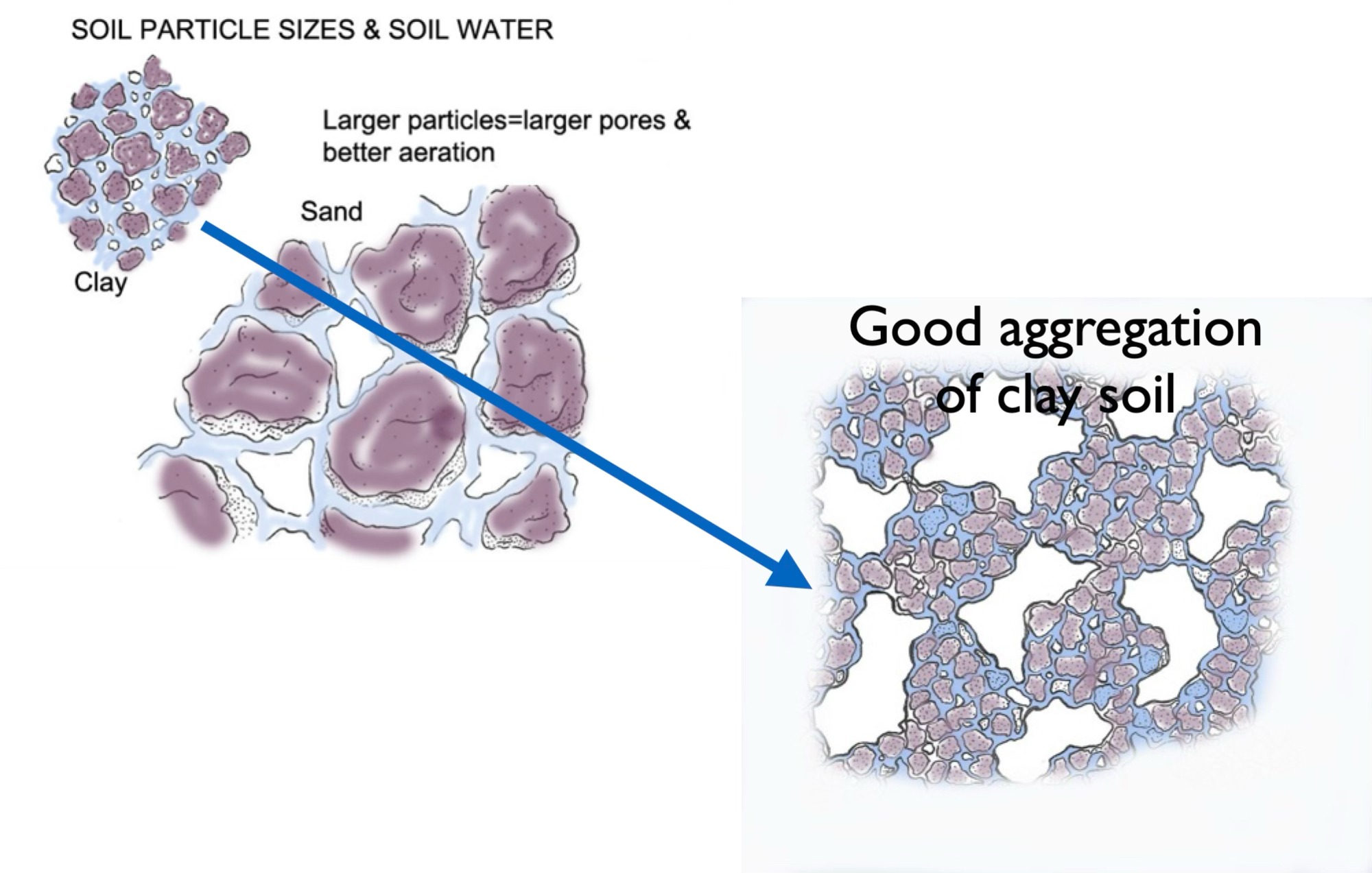
Hi Lee,
Your sense of humor makes me smile. I just started your book, The Ever Curious Gardner, and needed a dictionary right off which intrigued me even further. Now, about my question. I’m not sure about your picture regarding pinching of that stem on the fig tree.
I would read your book on figs but I live in Scottsdale, AZ. Not a cold climate. It looks like the stem is severed indicated by the arrow.
Thanks, Karen
No, I had pinched the growing tip awhile ago and, besides stimulating figs to form along the stem, it also, as would be predicted, resulted in branching of the stem.
Glad you like my book.
Ah, I have a lot to learn about fig trees. Thanks for the explanation. I guess I can benefit from your book after all.
Is there anything I can do to hasten fig ripening?
I guess you haven’t looked at my book GROWING FIGS IN COLD CLIMATES in which I describe fig ripening and various ways of hastening it as long as progressed a sufficient amount. Briefly, that would be by pinching stem tips and/or oiling the eye (of the fig).
Thanks Lee. I have read your book but I’d forgotten. Thank you!
I am surprised that you can grow figs and cold climates. I live in Central Minnesota and I am wondering if that is something that I could grow here? I’m not even sure if the nurseries in Minnesota sell fig trees?I love figs, but they do not typically sell them in the grocery stores unless I go to Trader Joe’s which is somewhat of a drive for me. We have two pair trees which are delicious but they do get the fungus on them and I was kind of wondering if I need to spray them and when is the best time to do that? We have had a lot of rain this year. End of this winter, I chopped the pear trees down quite a bit because they were too tall and now they are loaded with fruit, which I am very happy with. I am also trying your weedless gardening for the first time this year. I’m excited to say it is doing very well despite all the rain. I think things are a little bit behind because of it.
Thanks for all the feedback. As far as figs, you can purchase them from numerous mail-order sources, such as http://www.raintrenursery.com. If you do want to grow them in MN, I highly suggest you take a look at my book GROWING FIGS IN COLD CLIMATES, available here on my website and from other sources.
I will do that